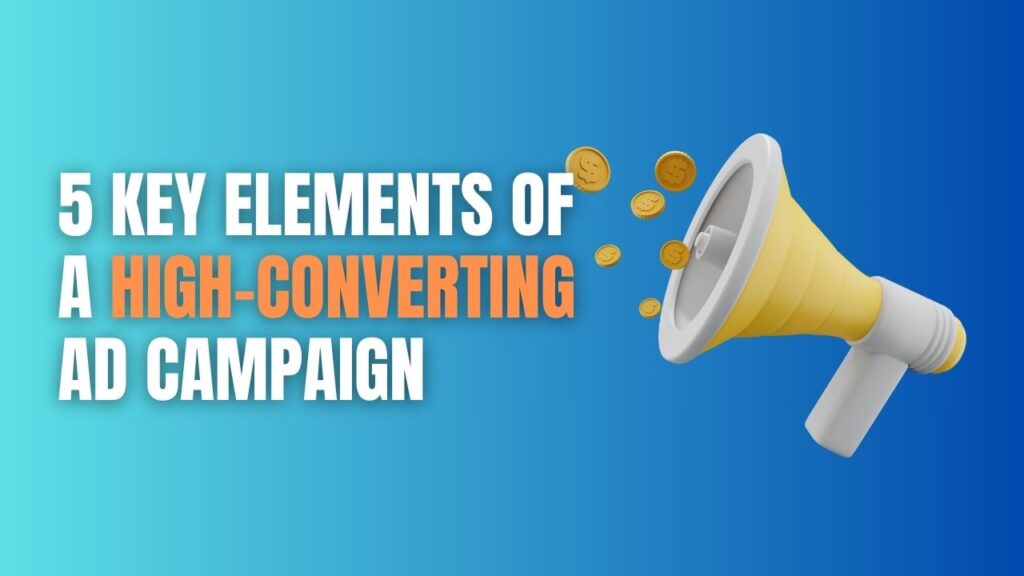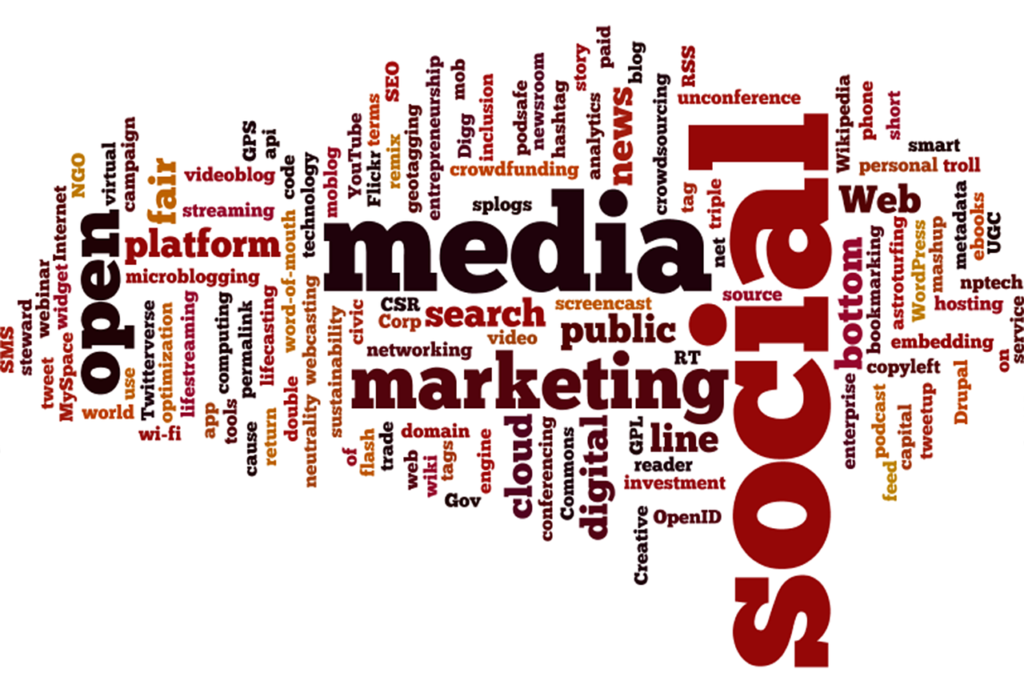In today’s competitive landscape, where every business vies for the attention of its target audience, the ability to create ad campaigns that not only attract but also convert is paramount.
Imagin: you’ve invested time, effort, and resources into launching an ad campaign, only to find it falling short in delivering the desired results. It’s a scenario familiar to many businesses and startups – the frustration of seeing ad dollars go down the drain without yielding significant returns.
But fear not, for amidst the challenges lie opportunities. The key lies in understanding the fundamental elements that contribute to the success of an ad campaign.
5 Key Elements of a High-converting Ad Campaign
Here is the list of 5 key elements of a high-converting ad campaign that attract visitors and clicks –
- Compelling Headlines
- Customized Calls-to-Action (CTAs)
- Visual Content
- Persuasive Copywriting
- Optimization and Testing
With these elements in mind, let’s explore each in detail to uncover strategies for creating ad campaigns that not only capture attention but also drive conversions.
Compelling Headlines: Grabbing Attention from the Start
Eight out of 10 visitors will only read the headline. That’s right, the headline serves as the first point of contact between your ad and your audience. It’s your chance to make a strong impression, pique curiosity, and entice users to delve deeper into your message.
Crafting compelling headlines requires a delicate balance of creativity and strategy. It’s about distilling your message into a concise yet captivating snippet that resonates with your target audience. Whether it’s sparking curiosity, offering a solution to a problem, or evoking emotion, the headline sets the tone for the entire ad campaign.
So, how do you craft headlines that stand out amidst the noise of the digital landscape?
Start by understanding your audience – their pain points, desires, and motivations. Tailor your headlines to address their needs and speak directly to their interests.
Next, focus on clarity and conciseness. Keep your headlines short and to the point, ensuring they’re easily digestible at a glance. Use power words that evoke emotion and create a sense of urgency, prompting users to take action.
Additionally, consider leveraging numbers, questions, and intriguing statements to grab attention and entice users to learn more. Remember, the goal of the headline is not just to grab attention but to compel users to engage further with your ad campaign.
Let’s take a look at some examples of effective headlines in action:
“Say Goodbye to Stressful Mornings: Try These Productivity Hack”
“Transform Your Skin in 30 Days: Shop Our Best-Selling Skincare Range Now!”
These headlines are clear, concise, and tailored to address the target audience’s needs and desires.
Customized Calls-to-Action (CTAs): Guiding Users Towards Conversion
Once you’ve captured your audience’s attention with a compelling headline, the next step is to guide them towards taking action. This is where customized calls-to-action (CTAs) come into play. In fact, customized CTAs are known to convert 42% more visitors into customers.
Generic CTAs like “Click Here” or “Learn More” may suffice in some cases, but to truly drive conversions, it’s essential to customize your CTAs to resonate with your audience.
Consider the stage of the buyer’s journey your audience is in and tailor your CTAs accordingly. For example, if you’re targeting users who are in the consideration stage, CTAs like “Explore Our Solutions” or “Request a Demo” may be more effective in guiding them towards conversion.
Best Practices for Creating Irresistible CTAs
Here are some best practices for creating irresistible CTAs:
- Be Clear and Action-Oriented: Use concise and straightforward language that tells users exactly what action you want them to take.
- Create a Sense of Urgency: Use words like “Limited Time Offer” or “Act Now” to create a sense of urgency and encourage immediate action.
- Offer Value: Highlight the benefits users will receive by clicking on the CTA, whether it’s accessing valuable content, redeeming a special offer, or solving a problem.
Visual Content: Captivating Audiences at a Glance
Where attention spans are shorter than ever, visual content has emerged as a powerful tool for capturing audience attention and conveying messages quickly and effectively.
52% of people prefer visual content. Whether it’s eye-catching images, engaging videos, or informative infographics, visual content has the ability to make a lasting impression on viewers and drive engagement.
Whether it’s showcasing product features, highlighting customer testimonials, or telling the brand’s story, visual content allows businesses to engage and resonate with their audience on a more personal level.
Tips for Creating Visually Compelling Ads
Here are some tips for creating visually compelling ads:
- Use High-Quality Images and Videos: Invest in high-quality visuals that are clear, crisp, and visually appealing.
- Tell a Story: Use visuals to tell a story that resonates with your audience and conveys your brand’s message and values.
- Keep it Consistent: Maintain a consistent visual style across all your ads to reinforce brand recognition and identity.
- Optimize for Mobile: Ensure that your visual content is optimized for mobile devices, as an increasing number of users consume content on smartphones and tablets.
- Include a Clear CTA: Don’t forget to include a clear call-to-action in your visual content to guide users towards conversion.
Persuasive Copywriting: Conveying Benefits and Creating Desire
While visuals may capture attention, it’s persuasive copywriting that seals the deal.
Compelling copy draws 7.8 times better brand recall. Effective copywriting goes beyond merely describing a product or service – it’s about connecting with your audience on a deeper level, addressing their pain points, and showcasing the value your offering provides.
The key to persuasive copywriting lies in understanding your audience’s pain points, desires, and motivations. Use language that resonates with your audience, highlighting the benefits and solutions your offering provides.
Copywriting Techniques That Drive Conversions
Here are some examples of copywriting techniques that drive conversions:
- Use Value-Focused Language: Focus on the benefits your product or service provides rather than just its features. Highlight how it solves a problem or improves your audience’s life.
- Create a Sense of Urgency: Use time-limited offers or scarcity tactics to create a sense of urgency and prompt immediate action.
- Incorporate Social Proof: Include customer testimonials, reviews, or case studies to provide social proof and build trust with your audience.
- Address Objections: Anticipate and address potential objections or concerns your audience may have, reassuring them and alleviating any doubts.
Optimization and Testing: Iterating for Continuous Improvement
Launching an ad campaign is just the beginning. To ensure ongoing success and maximize results, regularly evaluating performance, making data-driven adjustments, and iterating on ad campaigns, help businesses can refine their strategies and drive better outcomes over time.
A/B testing, also known as split testing, comparing two versions of an ad or landing page to see which performs better. From testing different headlines and visuals to CTAs and ad copy, A/B testing allows businesses to make informed decisions based on real-time data and insights.
In addition to A/B testing, tracking key metrics such as click-through rates, conversion rates, and cost per acquisition, businesses can gain valuable insights and areas for improvement.
Strategies for Optimizing Ad Campaigns for Maximum Impact
Here are some strategies for optimizing ad campaigns for maximum impact:
- Set Clear Goals: Define clear, measurable goals for your ad campaigns and use them as benchmarks for success.
- Test One Variable at a Time: When conducting A/B tests, focus on testing one variable at a time to isolate the impact of each change.
- Monitor Performance Regularly: Keep a close eye on campaign performance and make adjustments as needed to optimize results.
- Stay Up-to-Date with Trends: Stay informed about industry trends and best practices in digital advertising to stay ahead of the curve.
- Continuously Iterate and Improve: Optimization is an ongoing process. Continuously iterate on your ad campaigns based on data and insights to drive continuous improvement.
Conclusion
In the dynamic and ever-evolving landscape of digital advertising, the ability to create high-converting ad campaigns is paramount for businesses and startups alike.
By focusing on the five key elements outlined in this article – compelling headlines, customized calls-to-action, visual content, persuasive copywriting, and optimization and testing – businesses can unlock the potential to not only capture attention but to compel action and drive conversions.
If you need further assistance or guidance in creating high-converting ad campaigns, we can help you. Connect with Ads Guardian Team for further assistance.



